Bioinformatics, Phylogeny and Evolutionary Genomics Group
Members
Maîtresse de conférences
UCBL
Tel: 04 72 44 84 87

Professeure des universités
UCBL
Tel: 33 04 26 23 44 76
Doctorante
UCBL
Enseignant-chercheur CPJ
UCBL
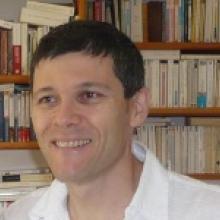
Directeur de recherche
CNRS
Tel: 33 04 72 44 62 97
Doctorant
CNRS

Professeur d'université émérite
UCBL
Tel: 04 72 44 85 60
Ingénieur d'études CDD
CNRS
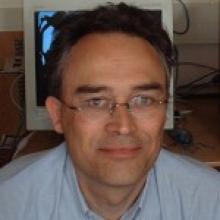
Directeur de recherche
CNRS
Tel: 33 04 72 43 11 67

Maîtresse de conférences
UCBL
Tel: 33 04 72 43 29 18
Doctorante
UCBL

Chargée de recherche
CNRS
Tel: 33 04 72 44 85 60
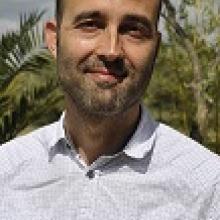
Directeur de recherche
CNRS
Tel: 04 72 44 84 87

Chargée de recherche
CNRS
Tel: 04 72 43 13 44

Directeur de recherche
CNRS

Maître de conférences
UCBL
Tel: 04 72 43 35 83
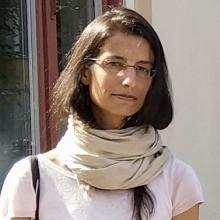
Chargée de recherche
CNRS
Tel: 04 72 44 81 42
Doctorant
CNRS

Directeur de recherche
CNRS
Tel: 33 04 72 44 62 96

Chargée de recherche
CNRS
Tel: 04 72 43 26 28
Doctorant
UCBL
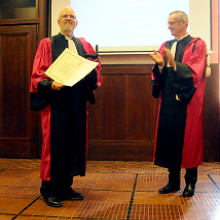
Chercheur invité
UCBL
Our group focuses on two main axes: phylogenomics (i.e. the inference of evolutionary history based on genomics data) and evolutionary genomics (understanding the molecular and population processes that drive genome evolution). We see genomes both as a subject of research (how do genomes evolve, why are they structured the way they are?), but also as a main source of empirical knowledge about the macroevolutionary patterns (what do they tell us about the history of life on Earth?), or about the phenotypes and life-history strategies of organisms. Our works heavily rely on methodological developments (bioinformatics, modeling and statistical inference).
Evolution of genome architecture and expression
Genomes are the result of a long-term evolutionary process, shaped by multiple evolutionary forces. Some genomic features are adaptive (i.e. are beneficial for the fitness of organisms), others result from non-adaptive processes (random drift and biased gene conversion - BGC) or are caused by conflicts between multiple levels of selection (e.g. meiotic drive or the spread of selfish genetic elements). We explore different aspects of genome architecture (base composition landscapes, genome structure and size, impact of transposable elements, …) or functioning (gene expression, lncRNAs, epigenetic landscapes, …), and try to disentangle the relative contribution of adaptive and non-adaptive processes to their evolution. For this purpose, we consider both the molecular mechanisms (mutation, repair, recombination) and the population processes (selection, drift, BGC, …) that shape genetic variation.
Phylogenomics
We are interested in reconstructing the history of life on Earth. This research unfolds along several axes. First, we develop phylogenomic databases of aligned genetic sequences (e.g. BIBI, RiboDB or HOGENOM). Second, we conduct methodological research on how to accurately reconstruct deep phylogenies, infer divergence times, reconstruct ancestral genetic sequences, gene repertoires and life-history traits. This methodological work is translated into publicly available software programs (e.g. SeaView, PhyloBayes, Coevol). Finally, we apply these approaches to several important problems, among which: reconstructing the phylogeny of animals, of archaea, or the global tree of life; using phylogenies and ancestral gene repertoires to investigate the evolution of complex systems and the emergence of molecular and cellular functions in the three domains of life; reconstructing ancestral genetic sequences, a research activity that has industrial and biotechnological applications.
Teaching and outreach
We teach at University Lyon 1 (Master Bioinfo@Lyon), INSA, ENS Lyon, we organize bioinformatics internships. We regularly give conferences on evolution (tree of life, human evolution, genetic diversity, …).
Prospective students and postdocs are invited to apply, as we often welcome visitors for internships or research projects.
Keywords: Molecular evolution and Population Genomics; Phylogenomics; Computational Genomics; Comparative genomics; Bioinformatics; Statistical inference.
Publications
Display of 481 to 510 publications on 1109 in total
Transcriptome Characterisation of the Ant Formica exsecta with New Insights into the Evolution of Desaturase Genes in Social Hymenoptera
PLoS ONE . 8 ( 7 ) : e68200
Journal article
see the publicationGenome-scale coestimation of species and gene trees.
Genome Research . 23 ( 2 ) : 323-330
Journal article
see the publicationNickel import in bacteria, structural study of extracytoplasmic nickel-binding proteins
16. International Conference on Biological Inorganic Chemistry (ICBIC) . 19 : 1
Conference paper
see the publicationXACT, a long non-coding transcript coating the active X chromosome in human pluripotent cells
Epigenetics and Chromatin: Interactions and processes . 6 ( Suppl 1 ) : O33
Conference paper
see the publicationBio++ : Efficient Extensible Libraries and Tools for Computational Molecular Evolution
Molecular Biology and Evolution . 30 ( 8 ) : 1745 - 1750
Journal article
see the publicationExperimental assessment of the accuracy of genomic selection in sugarcane
TAG Theoretical and Applied Genetics . 126 ( 10 ) : 2575-2586
Journal article
see the publicationEgyptian mummies record increasing aridity in the Nile valley from 5500 to 1500yr before present
Earth and Planetary Science Letters . 375 : 92-100
Journal article
see the publicationPhylogenies of Central Element Proteins Reveal the Dynamic Evolutionary History of the Mammalian Synaptonemal Complex: Ancient and Recent Components
GENETICS . 195 : 781--793
Journal article
see the publicationLUCA, ancêtre de tous les êtres vivants
Les Dossiers de la Recherche . 2 : 29--31
Journal article
see the publicationAn atlas of over 90,000 conserved noncoding sequences provides insight into crucifer regulatory regions
Nature Genetics . 45 ( 8 ) : 891 - 898
DOI: 10.1038/ng.2684
Journal article
see the publicationClassification of bacterial replicons based on the Genetic Information Transmission Systems
11th RECOMB - Comparative Genomics 2013 .
Conference paper
see the publicationPatterns of molecular evolution in dioecious and non-dioecious Silene
Journal of Evolutionary Biology . 26 : 335--46
DOI: 10.1111/jeb.12052
Journal article
see the publicationLife in an arsenic-containing gold mine: genome and physiology of the autotrophic arsenite-oxidizing bacterium rhizobium sp. NT-26.
Genome Biology and Evolution . 5 ( 5 ) : 934-53
DOI: 10.1093/gbe/evt061
Journal article
see the publicationPhylogenetic Patterns of GC-Biased Gene Conversion in Placental Mammals and the Evolutionary Dynamics of Recombination Landscapes
Molecular Biology and Evolution . 30 ( 3 ) : 489-502
Journal article
see the publicationAn Experimentally Tested Scenario for the Structural Evolution of Eukaryotic Cys2His2 Zinc Fingers from Eubacterial Ros Homologs
Molecular Biology and Evolution . 30 ( 7 ) : 1504 - 1513
Journal article
see the publicationA Branch-Heterogeneous Model of Protein Evolution for Efficient Inference of Ancestral Sequences
Systematic Biology . 62 ( 4 ) : 523-538
Journal article
see the publicationThe evolution of X chromosome inactivation in mammals: the demise of Ohno's hypothesis?
Cellular and Molecular Life Sciences . 71 : 1383--1394
Journal article
see the publicationTPMS: a set of utilities for querying collections of gene trees.
BMC Bioinformatics . 14 : 109
Journal article
see the publicationSimulating evolutionary scenarios to test whether they can induce reductive evolution
SMBE 2012 : Society for Molecular Biology and Evolution .
Poster
see the publicationDifferent kinds of genetic markers permit inference of Paleolithic and Neolithic expansions in humans
Conférence Jacques Monod .
Poster
see the publicationGeographical delimitation of a partial selective sweep in African \textitDrosophila melanogaster
Molecular Ecology . 21 : 5702--14
DOI: 10.1111/mec.12004
Journal article
see the publicationThe genetic prehistory of southern Africa
Nature Communications . 3 : 1143
DOI: 10.1038/ncomms2140
Journal article
see the publicationBridging Near and Remote Oceania: mtDNA and NRY Variation in the Solomon Islands
Molecular Biology and Evolution . 29 ( 2 ) : 545-564
Journal article
see the publicationBringing together linguistic and genetic evidence to test the Bantu expansion
Proceedings of the Royal Society B: Biological Sciences . 279 ( 1741 ) : 3256-3263
Journal article
see the publicationThe endogenous retrovirus ENS-1 provides active binding sites for transcription factors in embryonic stem cells that specify extra embryonic tissue
Retrovirology . 9 ( 1 ) : 21
Journal article
see the publicationRevisiting an Old Riddle: What Determines Genetic Diversity Levels within Species?
PLoS Biology . 10 ( 9 ) : e1001388
Journal article
see the publicationA Fine-Scale Chimpanzee Genetic Map from Population Sequencing
Science . 336 ( 6078 ) : 193-198
Journal article
see the publicationThe ABO blood group is a trans-species polymorphism in primates
Proceedings of the National Academy of Sciences of the United States of America . 109 ( 45 ) : 18493 - 18498
Journal article
see the publicationEvidence for Widespread GC-biased Gene Conversion in Eukaryotes
Genome Biology and Evolution . 4 : 787-794
DOI: 10.1093/gbe/evs052
Journal article
see the publicationToward community standards in the quest for orthologs
Bioinformatics . 28 ( 6 ) : 900-904
Journal article
see the publication
